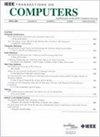A Computation-Quantized Training Framework to Generate Accuracy Lossless QNNs for One-Shot Deployment in Embedded Systems
IF 3.8
2区 计算机科学
Q2 COMPUTER SCIENCE, HARDWARE & ARCHITECTURE
引用次数: 0
Abstract
Quantized Neural Networks (QNNs) have received increasing attention, since they can enrich intelligent applications deployed on embedded devices with limited resources, such as mobile devices and AIoT systems. Unfortunately, the numerical and computational discrepancies between training systems (i.e., servers) and deployment systems (e.g., embedded ends) may lead to large accuracy drop for QNNs in real deployments. We propose a Computation-Quantized Training Framework (CQTF), which simulates deployment-time fixed-point computation during training to enable one-shot, lossless deployment. The training procedure of CQTF is built upon a well-formulated quantization-specific numerical representation that quantifies both numerical and computational discrepancies between training and deployment. Leveraging this representation, forward propagation executes all computations in quantization mode to simulate deployment-time inference, while backward propagation identifies and mitigates gradient vanishing through an efficient floating-point gradient update scheme. Benchmark-based experiments demonstrate the efficiency of our approach, which can achieve no accuracy loss from training to deployment. Compared with existing five frameworks, the deployed accuracy of CQTF can be improved by up to 18.41%.用于嵌入式系统一次性部署的精度无损qnn的计算量化训练框架
量化神经网络(QNNs)可以丰富部署在资源有限的嵌入式设备(如移动设备和AIoT系统)上的智能应用程序,因此受到越来越多的关注。不幸的是,训练系统(即服务器)和部署系统(例如嵌入式终端)之间的数值和计算差异可能导致实际部署中qnn的精度大幅下降。我们提出了一个计算量化训练框架(CQTF),它在训练期间模拟部署时间的定点计算,以实现一次性无损部署。CQTF的训练过程建立在一个良好的量化特定数值表示的基础上,该表示量化了训练和部署之间的数值和计算差异。利用这种表示,前向传播以量化模式执行所有计算以模拟部署时推断,而后向传播通过有效的浮点梯度更新方案识别和减轻梯度消失。基于基准的实验证明了该方法的有效性,该方法从训练到部署都没有精度损失。与现有的5个框架相比,CQTF的部署精度提高了18.41%。
本文章由计算机程序翻译,如有差异,请以英文原文为准。
求助全文
约1分钟内获得全文
求助全文
来源期刊

IEEE Transactions on Computers
工程技术-工程:电子与电气
CiteScore
6.60
自引率
5.40%
发文量
199
审稿时长
6.0 months
期刊介绍:
The IEEE Transactions on Computers is a monthly publication with a wide distribution to researchers, developers, technical managers, and educators in the computer field. It publishes papers on research in areas of current interest to the readers. These areas include, but are not limited to, the following: a) computer organizations and architectures; b) operating systems, software systems, and communication protocols; c) real-time systems and embedded systems; d) digital devices, computer components, and interconnection networks; e) specification, design, prototyping, and testing methods and tools; f) performance, fault tolerance, reliability, security, and testability; g) case studies and experimental and theoretical evaluations; and h) new and important applications and trends.
 求助内容:
求助内容: 应助结果提醒方式:
应助结果提醒方式:


